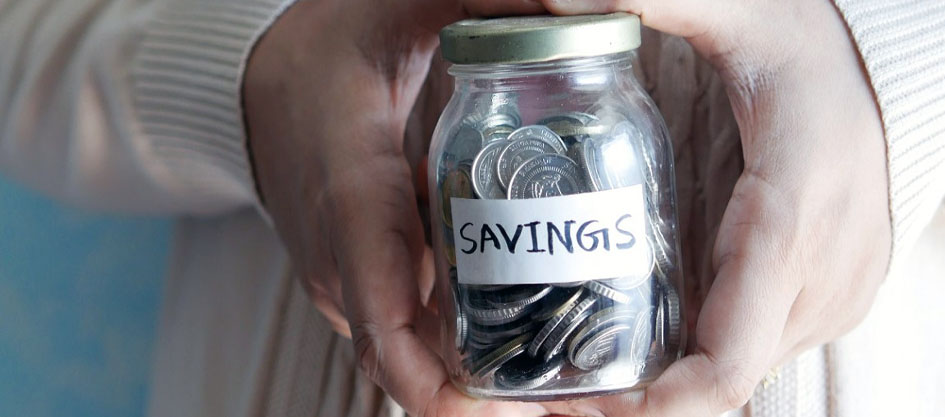
Saving or Investing? What Should You Prioritize First?
June 23, 2023 | by Erwin C. Baluyot
When it comes to managing your finances, it's crucial to
understand the distinction between saving and investing.
While both are essential components of a healthy financial plan,
they serve different purposes and offer distinct benefits.
Knowing how to prioritize between saving and investing can
significantly impact your financial well-being.
Understanding Saving:
Saving is the process of setting aside a portion of your income
for future use. It involves depositing money into a savings
account, such as a regular savings account or a time deposit
account, where it can earn interest over time.
Savings are generally low-risk and easily accessible, making
them suitable for short-term financial goals or emergencies.
They act as a safety net, ensuring that you have funds readily
available when needed.
Example:
Let's say you're saving for a down payment on a home. Each month, you contribute a portion of your income to a savings account, accumulating funds over time. Your savings account may offer an annual interest rate of 0.25% to 3% depending on the bank, allowing your money to grow slowly but steadily.

Understanding Investing:
Investing, on the other hand, involves putting your money into
assets or ventures with the expectation of generating a return
or profit over the long term.
Unlike saving, investing carries a higher level of risk, but it
also offers the potential for greater rewards. Investments can
include stocks, bonds, mutual funds, real estate, or even
starting a business. The goal of investing is to grow your
wealth over time by taking advantage of compounding returns and
capital appreciation.
Example:
Let's say you decide to invest in the Philippine stock market.
You purchase shares of well-established companies listed on the
Philippine Stock Exchange (PSE).
Over the long term, as the companies grow and generate profits,
the value of your shares can increase. The Philippine stock
market historically has provided an average annual return of
around 8% to 10% over extended periods.
You can also start investing through mutual funds the easy way.
For as low as ₱1,000, you can participate in the earnings
potential of the largest companies in the Philippines such as
SM, Globe, Ayala Land, Meralco, BPI, BDO, Jollibee, and many
more!
The good news is you can sign up and start investing at the
convenience of your laptop or smartphone through Rampver Online!
Prioritizing Saving and Investing:
Determining whether to prioritize saving or investing depends on
your financial goals, time horizon, risk tolerance, and current
financial situation. Here are some guidelines to consider:
- Build an Emergency Fund: Prioritize saving initially to establish an emergency fund equivalent to 3 to 6 months' worth of living expenses. This fund acts as a safety net and provides financial security in case of unforeseen circumstances.
- Clear High-Interest Debts: If you have outstanding debts with high-interest rates, such as credit card debts or personal loans, it's advisable to prioritize paying them off before considering significant investments. High-interest debts can erode your financial progress and should be tackled to achieve long-term stability.
- Time Horizon and Financial Goals: If your financial goals are short-term (within the next five years), such as buying a car or going on a vacation, saving would be the more suitable option. However, if your goals are long-term (over five years), such as retirement planning, investing can help you build substantial wealth over time.
- Diversification: Consider diversifying your investments across different asset classes to reduce risk. This can involve investing in a mix of stocks, bonds, real estate, or mutual funds to spread your risk and potentially increase your returns.

Conclusion:
Saving and investing are both essential components of a sound
financial plan, and understanding their differences is crucial
for financial success. Saving allows you to accumulate funds for
short-term goals and emergencies, while investing provides
opportunities for long-term growth and wealth creation.
Once you have established an adequate emergency fund, you can
confidently transition to investing with a clearer financial
standing. Remember, investing involves a degree of risk, and
having a secure emergency fund gives you the peace of mind to
pursue long-term investment strategies without compromising your
financial stability.
In summary, while the decision to save or invest ultimately
depends on your financial goals, time horizon, and risk
tolerance, it is generally advisable to prioritize building an
emergency fund before making significant investments. By doing
so, you create a solid foundation for your financial journey,
ensuring resilience and protection against unexpected events.

Start your investment journey today!
If you want to start your own investment journey, Rampver Financials is here to help!
Rampver Financials is a complete one-stop shop for the best financial products & services in the Philippines!
We help you make your important financial decisions simple & easy.
By listening to your needs & goals, we match you with the best products & services, and guide you throughout your journey so that you can be confident that your financial needs are covered. You can enjoy the convenience of talking to one financial advisor who is knowledgeable, has access and can service you for all your investment and insurance needs (no matter what company or brand it is)!
Kindly click the "Inquire now" button on top of this page, fill out the form, and a dedicated Rampver representative shall get in touch with you shortly. Thank you!